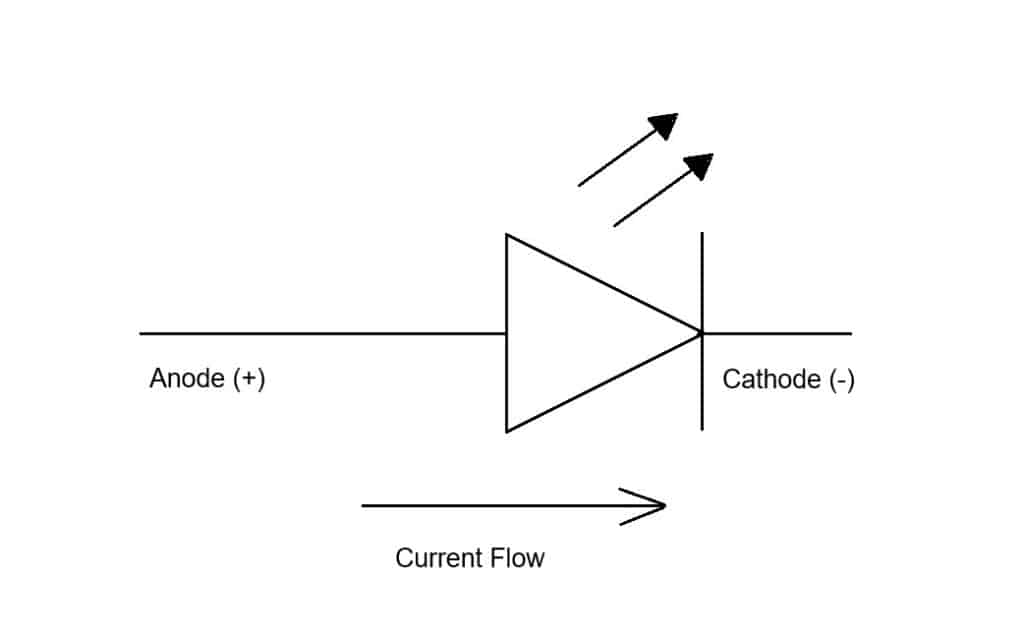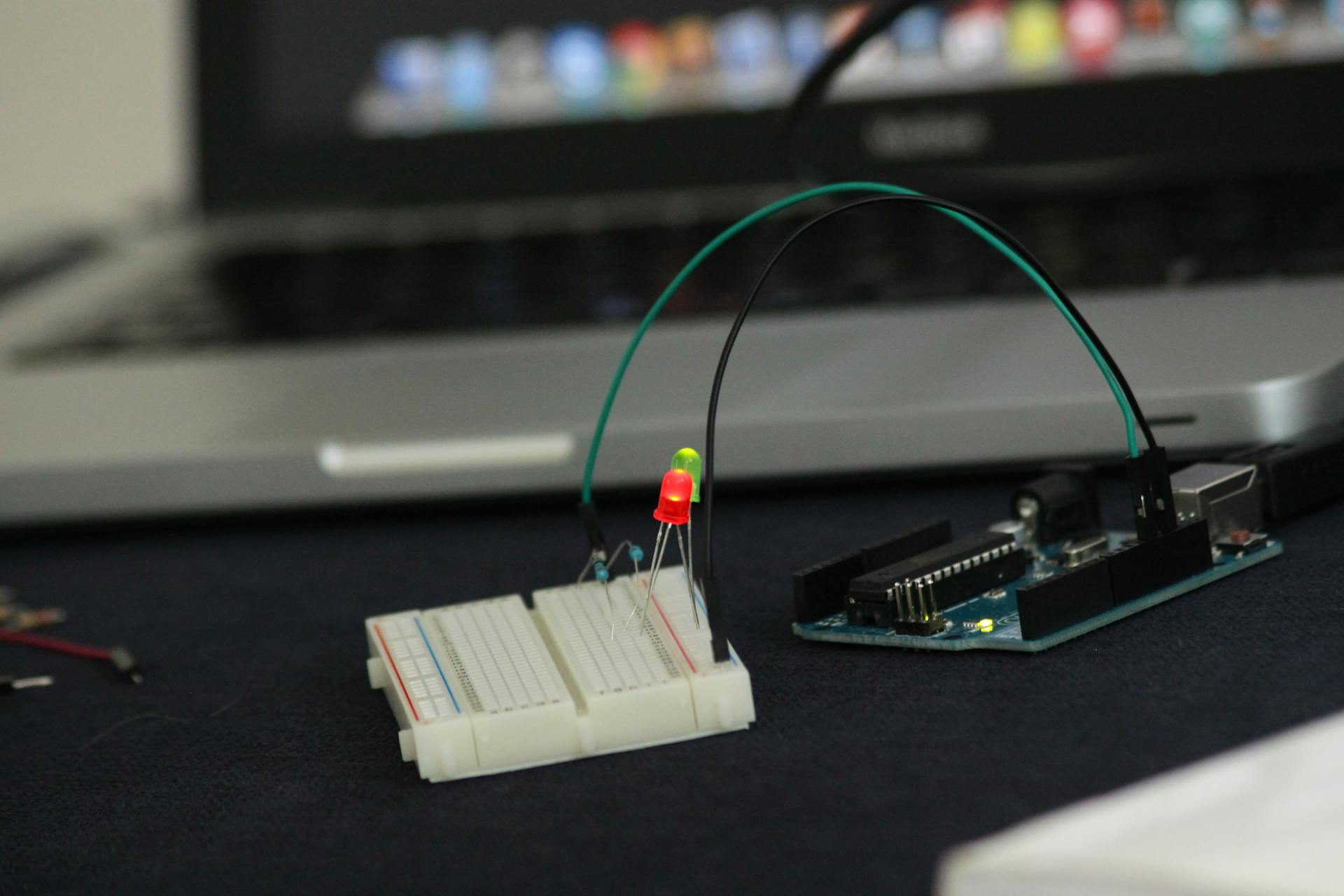Today, we’re surrounded by LEDs, from the phones in our pockets to the TVs in our homes. But have you ever wondered about the technology that makes all this possible?
Let’s dive into the fascinating world of LED technology, starting with the fundamental question, “What does LED stand for?”
What Does LED Stand For?
LED is an acronym that stands for Light Emitting Diode. While everyone can understand “Light” and “Emitting,” you might not be familiar with “Diode” and what it means. Let’s take a look.
Diode Defined: A diode is a small electronic device that allows electricity to travel through it but only in one direction. It’s like a one-way water valve but for electricity. This makes it quite useful as a component in circuits.
Now, a Light Emitting Diode is a specific type of diode that can display light in the visible spectrum. It’s why LEDs are so often used for TVs, sports displays, and more. LED technology offers an enormous amount of flexibility because of how small diodes can get.
What Is LED Lighting and How Does It Work?
What Is LED Lighting?
LED lighting is any light that uses LEDs to produce illumination. This is in contrast to incandescent bulbs that heat a filament or fluorescent lights that rely on gas and phosphor coatings.
However, when most people use the word LED, they usually mean either an LED display or an LED bulb that you’d use in your house.
How LED Lighting Works Broadly
LEDs use voltage that has been passed through a circuit to produce light. The light comes from semiconductor material inside the LED that emits photons in the visible spectrum.
LED Anode and Cathode
Passing voltage through the semiconductor requires two metal leads, both of which have plates located inside the LED case. The leads and their plates are similar but also quite different from each other. The long lead with a small plate is the positive anode, and the short lead with a large plate is the negative cathode.
It’s worth noting that the anode and cathode are shaped as plates to stop leads from turning and ruining the LED’s function.
Although the plates are close to each other, they are separated by a tiny gap inside the case. You can usually always tell the anode and cathode apart by the length of their lead.
However, if the leads get damaged or trimmed for some reason, you can still tell which side is the cathode side by the shape of the LED case itself. The side with the cathode has a flat edge. LED cases are made from an epoxy resin, so they can be easily shaped in this manner.
A bond wire connects the anode to the semiconductor: Please note that the semiconductor is attached to the cathode. In fact, the cathode contains the semiconductor inside a cone-shaped cup.
When current flows through the bond wire to the semiconductor, the LED lights up. A cone-shaped reflector around the semiconductor directs the light outward so it can be seen.
Note: Resistors are also used in LED circuits to protect the LED from excess current.
How LEDs Produce Color
The science behind how LEDs produce color through their semiconductor material is fairly complex. A somewhat simple explanation is that the semiconductor, which uses both P-type and N-type material, emits photons at a specific wavelength from what’s called a PN Junction. The wavelength is determined by the composition and impurities in the P-type and N-type layers of the semiconductor.
That said, some LEDs come with colored lenses to help buyers tell what color they produce.
Note: Other types of LEDs, including SMD LEDs, have their own unique designs and structures that differ from what has been explained above.
Infrared LEDs
Some LEDs produce light that is invisible to the human eye. A good example is the LED at the end of your remote controller, which emits infrared light.
Infrared light is used for remote controllers for several reasons:
- One, radios and microwaves already dominate low wavelength bands.
- Two, visible light could accidentally trigger the signal receiver on the TV or otherwise interfere with the remote.
- Three, higher wavelengths are either too power-consuming or dangerous to use at your house on a regular basis.
- Four, IR light can be easily modulated to send coded signals.
- Five, IR emitters tend to be cheap, so they can be mass-produced.
- Six, IR light doesn’t over-penetrate through material, meaning you aren’t going to accidentally change the channel to your TV, for instance, in your bedroom, when you actually want to change the TV in your living room.
LED Symbol

This image shows the direction current flows in a Light Emitting Diode. As you can see, the current flows from the anode (positive terminal) to the cathode (negative terminal) when the LED is forward-biased.
The upward arrows in the symbol indicate that the LED emits light.
LED and Lumen Depreciation
LED lifespans are measured by the gradual dimming of brightness, unlike incandescent or CFL bulbs, and are typically defined as the point when light output decreases by 30%. This is called lumen depreciation.
How Are LEDs Used in Lighting?
LEDs are versatile and have a number of uses, including but not limited to:
- LED displays
- Bulbs and fixtures for general lighting
- Automotive lighting
- Traffic signals and indicators
- Street and outdoor lighting
- Smartphone and monitor backlighting
- Smart home lighting systems
- Stage and theatrical lighting
- Remote controllers
How Is LED Lighting Different From Compact Fluorescent and Incandescent?
LEDs, CFLs, and incandescents all use electricity. However, LEDs use a small semiconductor chip that emits light when electricity passes through it.
In contrast, CFLs contain a gas that lights up, while incandescent bulbs have a thin wire filament that heats up and glows.
This difference makes LEDs the most efficient of the three, as they waste very little energy in the form of heat and last much longer than both CFLs and incandescent bulbs.
Advantages of LEDs
LEDs can produce bright light while generating very little heat, which often makes them safer and more comfortable than alternatives.
Additionally, LEDs are highly efficient because they minimize energy waste, unlike traditional lighting options.
Contact Elite Displays
Understanding LED technology, from its basic function as a light-emitting diode to its diverse applications in displays and signage, is crucial for making informed decisions about your project.
As we’ve explored, LEDs offer greater efficiency, minimal heat output, and considerable versatility through their semiconductor-based design.
Ready to harness this powerful technology for your business? Contact Elite Displays to transform your vision into reality with our custom LED solutions.
» MORE: What Are Transparent LED Screens?
» MORE: LED vs. LCD: Which One Is Better For Outdoor Display?

